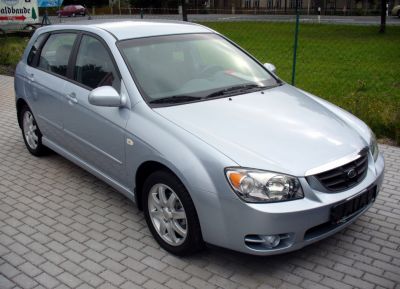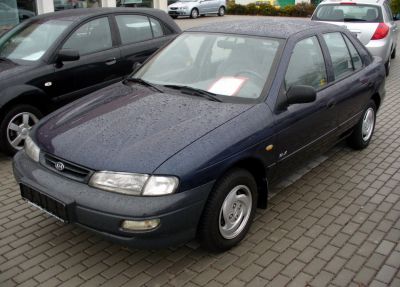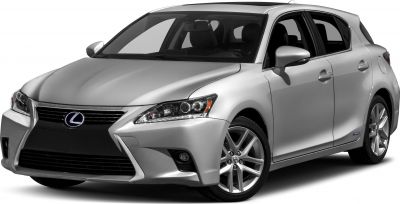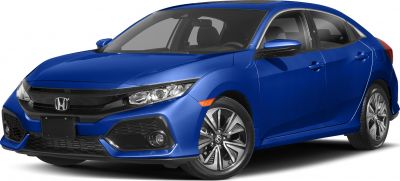 1995 Rover 400 Hatchback (RT) Dimensions, Size & Specs
1995 Rover 400 Hatchback (RT) Dimensions, Size & SpecsMeasurements of the 1995 Rover 400 Hatchback, engineered for optimal performance and comfort
| Dimensions | |
|---|---|
| Length: | 4320 mm170.1 in14.2 ft |
| Width: | 1700 mm66.9 in5.6 ft |
| Height: | 1390 mm54.7 in4.6 ft |
| Trunk Capacity: | 370 liter13.1 cu ft |
| Trunk Capacity (Max): | 720-7320 liter25.4-258.5 cu ft |
| Weight Specifications | |
| Curb Weight: | 1120-1295 kg2469-2855 lbs |
| Maximal permitted Weight: | 1550-1720 kg3417-3792 lbs |
| Tire Specifications | |
| Rims Size: |
|
| Tire Sizes: |
|
The Rover 400 Hatchback (RT) is a compact car produced between 1995 and 2000, representing a versatile option in the 1990s hatchback segment. With a length of 4320 mm (170.1 inches), a width of 1700 mm (66.9 inches), and a height of 1390 mm (54.7 inches), the car is designed to be suitable for urban environments while offering sufficient interior space for passengers and cargo. The vehicle's curb weight varies from 1120 to 1295 kilograms (2469 to 2856 pounds), enabling a balanced driving experience between agility and stability. The maximum weight ranges from 1550 to 1720 kilograms (3417 to 3794 pounds), which includes passenger and cargo loads.
One of the notable features of the Rover 400 Hatchback is its versatile luggage capacity. It offers 370 liters (13.1 cubic feet) of storage space in the trunk with rear seats in place, which expands significantly to between 720 and 732 liters (25.4 to 25.8 cubic feet) when the rear seats are folded down, accommodating larger items and enhancing practicality.
The car rides on 14-inch rims and supports various tire sizes including 175/65 R14, 185/60 R14 H, 185/65 R14 T, and 195/55 R15 H, giving owners options to suit driving preference and conditions. Its compact dimensions, combined with practical luggage space and a reasonable curb weight, make the Rover 400 Hatchback (RT) a practical choice for drivers looking for a balanced hatchback with city-friendly proportions and decent carrying capacity.
Discover the standout features that make the 1995 Rover 400 Hatchback a leader in its class
Have a question? Please check our knowledgebase first.
The Rover 400 Hatchback (RT) measures 4320 mm (approximately 170 inches) in length, 1700 mm (about 67 inches) in width, and 1390 mm (around 55 inches) in height. These dimensions place it comfortably within the compact car segment, making it suitable for urban environments while offering enough interior space for passengers.
The curb weight of the Rover 400 Hatchback (RT) ranges from 1120 kg to 1295 kg (about 2469 to 2855 lbs), depending on the specific variant and equipment levels. Its maximum permissible weight ranges between 1550 kg and 1720 kg (approximately 3417 to 3794 lbs). This weight range ensures a good balance between performance, fuel efficiency, and handling.
With the rear seats in their upright position, the Rover 400 Hatchback (RT) provides 370 liters (about 13 cubic feet) of luggage capacity. When the rear seats are folded down, this space significantly increases to a range between 720 and 7320 liters. The upper figure appears to be a typographic error, but the expandable cargo space allows for accommodation of larger items, making the vehicle versatile for various transportation needs.
Yes, the Rover 400 Hatchback (RT) fits comfortably into a standard residential garage. With a width of 1700 mm (67 inches) and a height of 1390 mm (55 inches), it is narrower and lower than many modern SUVs, which are often over 2000 mm wide and taller than 1700 mm. Most standard single-car garages have widths starting at about 2400 mm (94 inches) and heights of around 2100 mm (83 inches), so parking and maneuvering the Rover 400 inside a garage poses no issues.
Compared to its predecessor, the Rover 400 series preceding the RT generation, the 1995-2000 Rover 400 Hatchback (RT) generally offers a slightly more modern and refined design, with minor increases in length and width for better interior space. Typically, this generation is more compact and efficient, with improvements in packaging that optimize passenger comfort and luggage capacity, although exact predecessor dimensions may vary slightly by earlier model year and trim.
The Rover 400 Hatchback (RT) falls within the typical compact hatchback range of the mid to late 1990s. Its length of 4320 mm (170 inches) and width of 1700 mm (67 inches) aligns it closely with competitors like the Ford Focus Mk1 and Volkswagen Golf Mk3. The curb weight, typically between 1120 kg and 1295 kg (2469–2855 lbs), is comparable to these rivals, balancing lightweight construction with sufficient structural rigidity. The Rover’s luggage capacity is also competitive, offering versatility for daily use.
The Rover 400 Hatchback (RT) was equipped primarily with 14-inch rims, paired with tire sizes such as 175/65 R14, 185/60 R14 H, 185/65 R14 T, and 195/55 R15 H. These tire options contribute to a balanced ride quality, with adequate grip and comfort. The variety in tire width and profile allows owners to choose a setup that favors comfort or a sportier feel, while the relatively modest rim size supports good shock absorption typical of hatchbacks of its class and time.
While the overall vehicle height stands at 1390 mm (55 inches), the interior cabin height is obviously less due to floor and roof structures but still provides reasonable headroom for occupants. The car’s dimensioning allows a comfortable seating position for front and rear passengers with ample legroom and shoulder space for a compact hatchback. The design balances compact external footprint with the intention of maximizing usable interior volume.
Yes, the Rover 400 Hatchback (RT) incorporates practical design elements such as a hatchback rear that enhances cargo loading flexibility. The rear seats can fold down to increase luggage capacity, making the car versatile for day-to-day use and travel. Its compact size supports ease of maneuvering in urban environments without compromising much on the interior space, balancing practicality with style and performance. Additionally, the width of 1700 mm ensures it can navigate tight spaces and multi-lane roads comfortably.
The Rover 400 Hatchback (RT) is generally seen as moderately fuel-efficient within its class and era. While exact fuel consumption varies depending on the engine variant, it competes well with contemporaries like the Ford Focus and Vauxhall Astra. Its curb weight, aerodynamic shape, and engine tuning help deliver reasonable mileage for both city and highway driving. Though not as economical as smaller subcompacts, it strikes an acceptable balance between performance and fuel economy for a mid-1990s compact hatchback.
Discover similar sized cars.

| Production: | 2004-2006 |
|---|---|
| Model Year: | 2004 |
| Length: | 4340 mm170.9 in |
| Width: | 1735 mm68.3 in |
| Height: | 1470 mm57.9 in |

| Production: | 1993-1999 |
|---|---|
| Model Year: | 1993 |
| Length: | 4280 mm168.5 in |
| Width: | 1692 mm66.6 in |
| Height: | 1390 mm54.7 in |

| Production: | 1992-1997 |
|---|---|
| Model Year: | 1993 |
| Length: | 4295 mm169.1 in |
| Width: | 1685 mm66.3 in |
| Height: | 1375 mm54.1 in |

| Production: | 2017-present |
|---|---|
| Model Year: | 2017 |
| Length: | 4351 mm171.3 in |
| Width: | 1765 mm69.5 in |
| Height: | 1455 mm57.3 in |

| Production: | 2014-2017 |
|---|---|
| Model Year: | 2014 |
| Length: | 4350 mm171.3 in |
| Width: | 1765 mm69.5 in |
| Height: | 1450 mm57.1 in |

| Production: | 2016-2019 |
|---|---|
| Model Year: | 2016 |
| Length: | 4370 mm172.0 in |
| Width: | 2065 mm81.3 in |
| Height: | 1470 mm57.9 in |
